The Confucius Institute at the State University of Pará (UEPA) orchestrated a series of cultural workshops to commemorate "International Chinese Language Day" in the year of the Dragon, 2024, preceding the Guyu (Grain Rain) solar term. Professor Clay Chagas, the president of UEPA, extended a warm welcome to the Chinese teachers from the Confucius Institute and shared a celebratory video for this auspicious occasion. The festivities, themed "Chinese Language: Connecting Cultures through the Bridge of Mutual Learning," spanned two weeks, from April 10th to 19th. During this time, the Confucius Institute hosted twenty-one cultural workshops, featuring activities such as calligraphy, Chinese song performances, paper-cutting, movable-type printing, and the iconic dragon dance. Nearly 400 students actively engaged in these workshops, immersing themselves in the captivating essence of Chinese intangible cultural heritage.
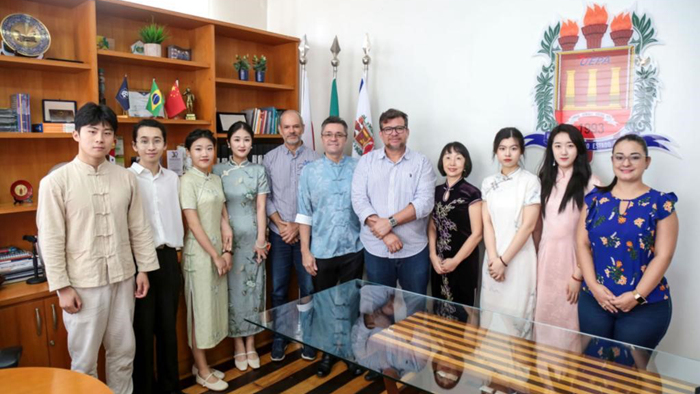
Celebrate the “Chinese Language Day” - I Got a Chinese Name!
For the new students embarking on their first week of Chinese courses, selecting and writing their Chinese names holds immense significance. Expressions like "My name is Mo Li," "My name is Wang Ziyang, and my brother is Wang Ziwei," or "I am Bai Shuyan" become pivotal moments. When the teacher bestowed upon me the name Ke Longfei, it seemed incredibly cool! Guided by volunteer teacher Ms. Dai Yuxin, the students eagerly and enthusiastically penned down their new names, stroke by stroke, brimming with excitement and anticipation.
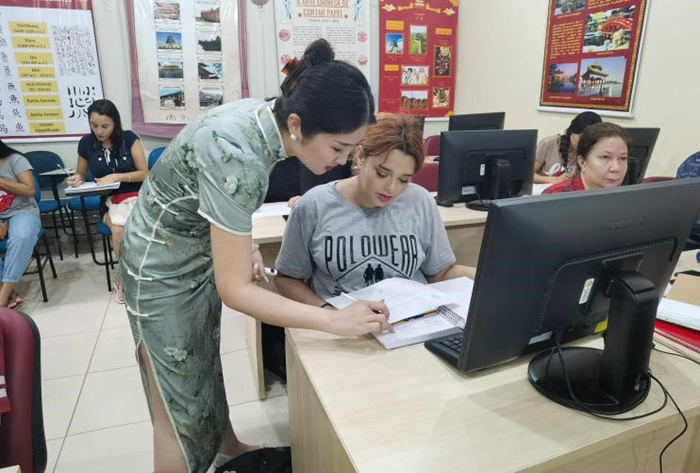
Calligraphy Workshop - The Rhythm of Writingbrush and Ink
At the onset of the calligraphy session, under the guidance of volunteer teacher Mr. Ye Fangyu, the students delved into the fundamentals: how to properly grip a Chinese writingbrush and execute simple strokes. With Mr. Ye's assistance, they joyfully completed their artworks. Engaged in the practice of calligraphy, they savored the sensation of solidity and emptiness, as well as the interplay between rigidity and flexibility inherent in the strokes of the soft brush.
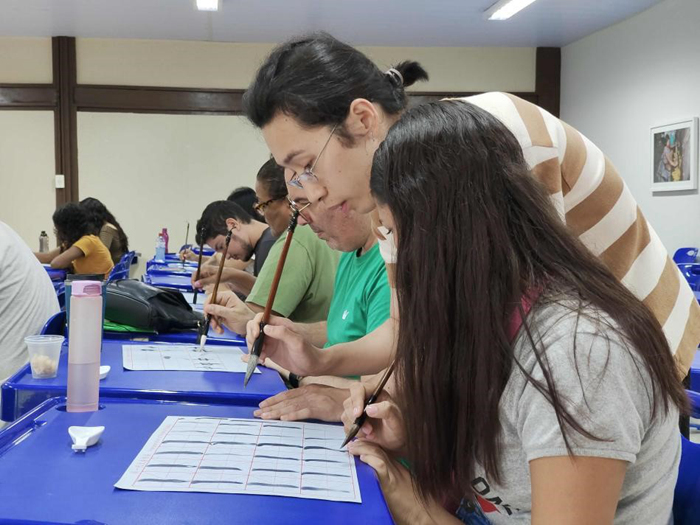
Chinese Paper Cutting - The Art of Fingertips
Paper cutting stands as a quintessential example of traditional Chinese folk art. Employing diverse folding techniques and intricate pattern designs, artisans craft exquisite artworks showcasing a myriad of shapes and forms. Under the expert guidance of Mr. Shang Ying and Ms. Yin Yue, students embarked on a delightful journey to master the art of paper cutting. Their lessons included creating intricate designs such as the Chinese character "春" (spring), the gourd, the Yuanbao (ancient Chinese currency), and the beloved panda, fostering both creativity and cultural appreciation.

Printing with Movable Type - Dive into the “Black” Technology of Ancient China
Teacher Wang Xiao's questions about the "four great inventions of China" and the inventor of movable type printing immediately piqued the students' curiosity, prompting them to listen attentively to Ms. Wang Xiao's explanations. Under her demonstration and guidance, students embarked on the intricate process of character selection, typesetting, ink brushing, paper lamination, and rubbing. Through hands-on experience, they were transported back thousands of years, touching the memories of ancient times and intimately experiencing the allure of ancient science and technology. As a piece of ancient poetry, steeped in the fragrance of ink, quietly "resurrected" before their eyes, everyone was awestruck by the richness and profundity of traditional Chinese culture.
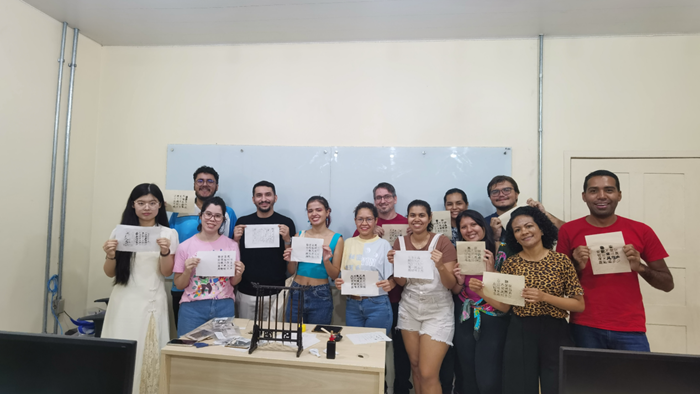
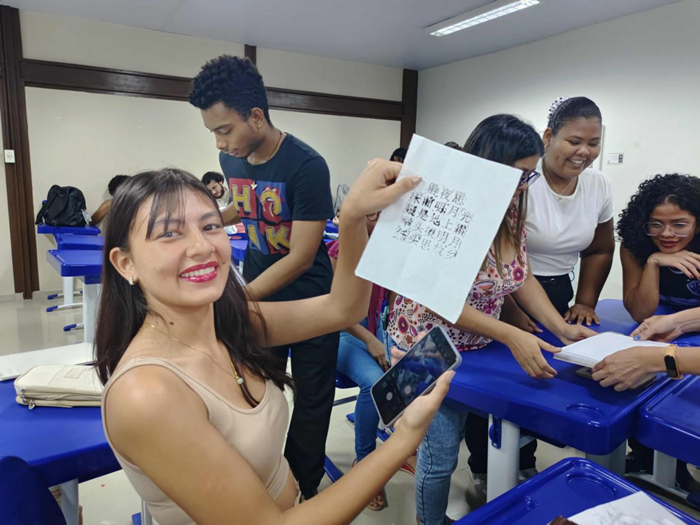
Learning Chinese by Singing Chinese Song - Norishing Silently
“What it’s like to live in the spring?” This is a challenging question for Brazilian students accustomed to the hot and rainy Amazon region! Guided by Ms. Fang Jingyi, the students delved into an ancient Chinese poem “This morn of spring in bed I’m lying, Not wake up till I hear birds crying.” Immersed in the gentle melody, they conquered the pronuciation hurdles of the lyrics and felt the Chinese people’s profound affection for spring and their reverence for its arrival.
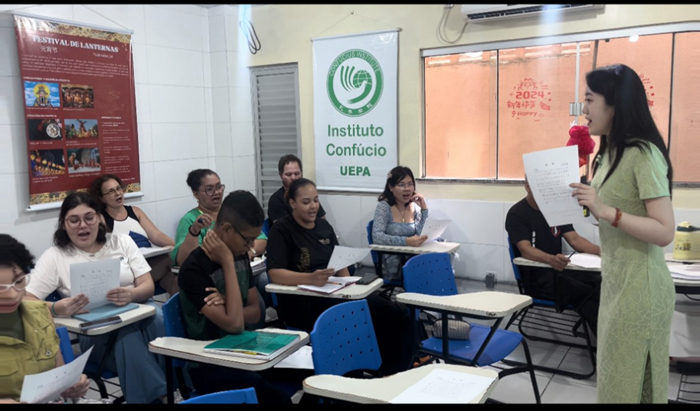
Dragon Dance - Dancing with the Dragon on the Day of Grain Rain
Regarded as the emblem of the Chinese culture, the Dragon Dance embodies the community's hopes for favorable weather, abundant harvests, and expresses their jubilation and well-wishes. Hence, to commemorate International Chinese Language Day during the Year of the Dragon, orchestrating a Dragon Dance is imperative! Under the guidance of volunteer teacher Mr. Shang Ying, a majestic dragon adorned in vibrant brocade hues swayed to the melodies of Chinese Dragon and Legend of the Dragon. The students' cheers crescendoed and waned, creating a magnificent and joyous spectacle.
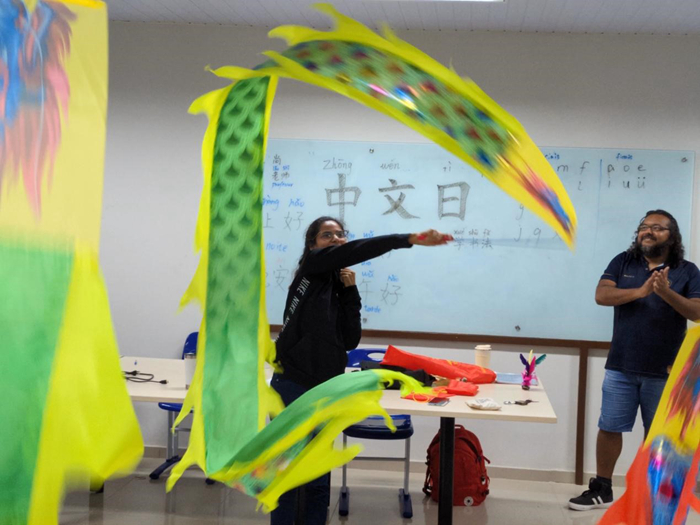
This series of workshop activities seamlessly weaves traditional Chinese culture into the daily teaching curriculum of the Confucius Institute, fostering an engaging and educational environment. By making Chinese cultural elements more lively and accessible, it effectively ignites students' interest in learning the language. Through these workshops, students not only deepen their understanding and appreciation of traditional Chinese culture but also facilitate mutual cultural exchange between China and Brazil. This enhances mutual understanding and fosters friendship between the two nations.